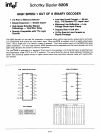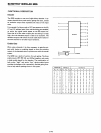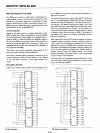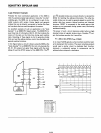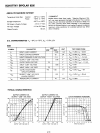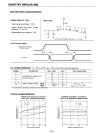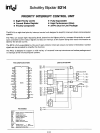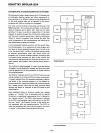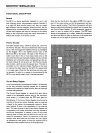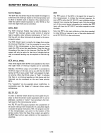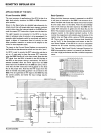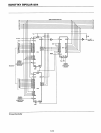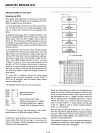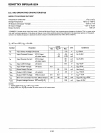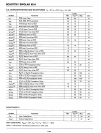
SCHOTTKY BIPOLAR 8214
INTERRUPTS IN MICROCOMPUTER SYSTEMS
Microcomputer system design requires
that
I/O devices such
as keyboards, displays, sensors and
other
components
re-
ceive servicing
in
an efficient
method
so
that
large amounts
of
the
total
systems tasks can be assumed
by
the
micro-
computer
with little
or
no effect
on
throughput.
The
most
common
method
of
servicing such devices
is
the
Polled approach. This
is
where
the
processor
must
test
each
device
in
sequence and
in
effect
"ask"
each
one
if it needs
servicing. It
is
easy
to
see
that
a large portion
of
the
main
program
is
looping through this continuence polling cycle
and
that
such a method would have a serious, detrimental
effect on system
throughput
thus
limiting
the
tasks
that
could be assumed by
the
microcomputer
and reducing
the
cost effectiven.ess
of
using such devices.
A
more
desireable
method
would be
one
that
would allow
the
microprocessor
to
be
executing its main program and
only
stop
to
service peripheral devices when it
is
told
to
do
so
by
the
device itself.
In
effect,
the
method
would provide
an external asynchronous
input
that
would inform
the
processor
that
it should compiete whatever instruction
that
is
currently being executed and fetch a new routine
that
will service
the
requesting device. Once this servicing
is
com-
plete however
the
processor would resume exactly where it
left off.
This
method
is
called Interrupt. It
is
easy
to
see
that
system
throughput
would drastically increase, and
thus
more tasks
could be assumed by
the
microcomputer
to
further
enhance
its cost effectiveness.
The
Priority
Interrupt
Control Unit (PICU) functions
as
an
overall manager in an Interrupt-Driven system environment.
It accepts requests from
the
peripheral equipment, determ-
ines which
of
the
incoming requests
is
of
the
highest
im-
portance (priority), ascertains
whether
the
incoming request
has a higher priority value
than
the
level
currently
being
serviced and issues an
Interrupt
to
the
CPU based on this
determination.
Each peripheral
devi~e
or
structure
usually has a special
program
or
"routine"
that
is
associated with its specific
functional
or
operational requirements; this
is
referred
to
as a "service
routine".
The
PICU,
after
issuing an Interrupt
to
the
CPU, must somehow
input
information into
the
CPU
that
can
"point"
the
Program Counter
to
the
service rou-
tine
associated with
the
requesting device.
The
PICU en-
codes
the
requesting level into such information for use
as
a
"vector"
to
the
correct
I
nterrupt
Service Routine.
5-154
RAM
ROM
Polled Method
RAM
ROM
I
nterrupt
Method
CPU
CPU
INT
CPU·DRIVEN
MULTIPLEXOR
--"""'"
"




